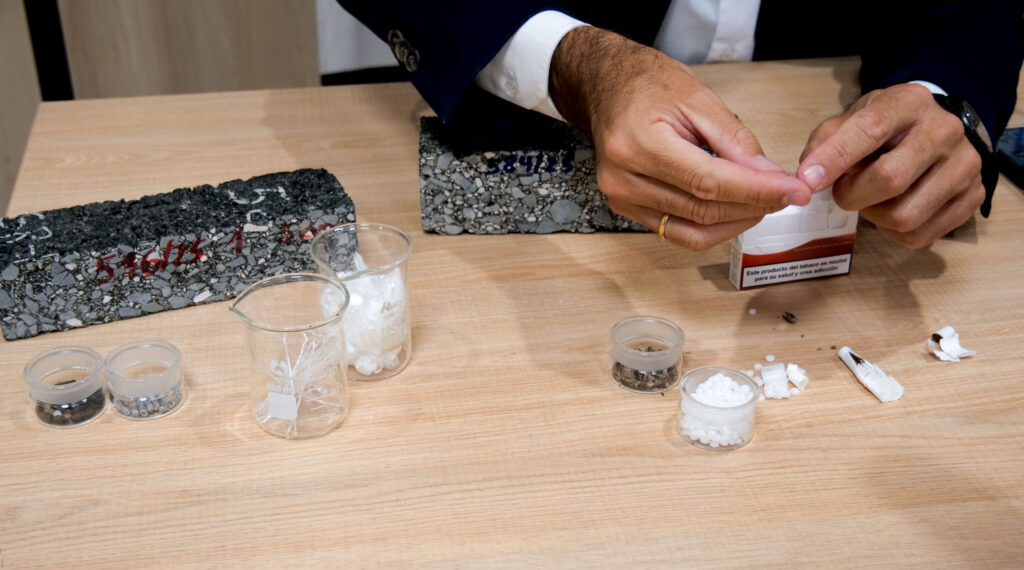Since the advent of filter cigarettes, cigarette butts have become a predominant form of waste, with projections indicating that about 9 trillion will be generated annually by 2025. In addition, since the emergence of low-nicotine e-cigarettes, the consumption and production of this waste has been on the rise (especially among young people aged 14 to 30).
Much of this waste poses a serious environmental problem, as it is improperly disposed of in natural environments, beaches, forests, aquatic environments, etc., and has an extremely slow degradation rate.
An innovative collaborative research project between the University of Granada (UGR) and the University of Bologna (Italy), proposes an alternative for recycling cigarette butts (from any type of cigarette, but especially electronic cigarettes, as they contain a higher amount of usable fiber) as an additive in road construction. The research has demonstrated the feasibility of incorporating this waste to improve the crack resistance of road pavements and the reuse of higher rates of recycled material.
The Department of Civil, Chemical, Environmental and Materials Engineering at the University of Bologna designed and manufactured different types of pellets from cigarette butts. To do this, the end of the cigarette butt (composed of organic ash) was discarded, while the rest (almost all of the weight, consisting of cellulose fibers and PLA plastic) was crushed and mixed with a Fischer-Tropsch-type wax (which acts as a binder) and subjected to a process of pressing, heating and cold cutting to produce the pellets.
Subsequently, the Building Engineering Laboratory (LabIC.UGR) was responsible for evaluating the resistance of asphalts manufactured with 40% of their weight coming from recycled material from deteriorated roads and pellets from electronic cigarette butts. LabIC.UGR, directed by professors Mª Carmen Rubio Gámez and Fernando Moreno Navarro, is one of the university’s unique laboratories and a world leader in the development of sustainable asphalt materials.
During the manufacture of asphalt, when the pellets come into contact with the hot bitumen, the wax melts and releases the recycled cellulose and plastic fibers from the cigarette butts. These fibers act as a reinforcement within the asphalt matrix, increasing its resistance to cracking, but also as a binder, allowing its content to be increased, making the material more ductile and flexible.
In addition, the presence of waxes would make it possible to modify the viscosity of the bitumen and reduce the manufacturing temperature of the mixture, thereby reducing energy consumption and pollutant emissions.
The results of the tests carried out at LabIC.UGR, now published in Construction and Building Materials, have shown that the use of these pellets would allow the manufacture of asphalts with high recycled material content that offer better resistance to cracking under traffic loads and thermal shrinkage than conventional asphalts. Among the tests carried out, the UGR-FACT method for the structural and durability study of the material, patented by the University of Granada, stands out.
More information:
Yunfei Guo et al, Use of engineered pellets containing E-cigarette butts and a recycling agent for stone mastic asphalt mixtures incorporating recycled asphalt, Construction and Building Materials (2025). DOI: 10.1016/j.conbuildmat.2025.141832
Citation:
Scientists design sustainable and more resistant asphalt using cigarette butts (2025, July 23)
retrieved 24 July 2025
from https://techxplore.com/news/2025-07-scientists-sustainable-resistant-asphalt-cigarette.html
This document is subject to copyright. Apart from any fair dealing for the purpose of private study or research, no
part may be reproduced without the written permission. The content is provided for information purposes only.

